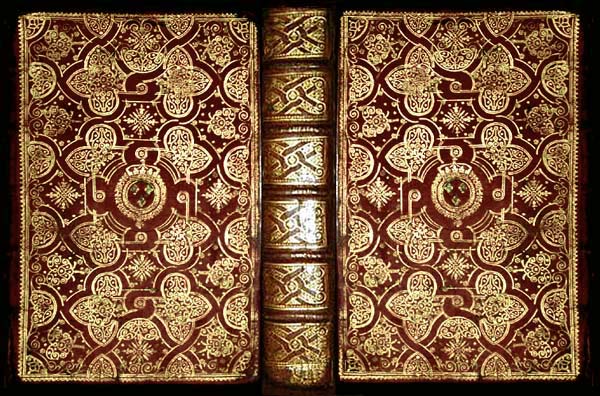

| The binding pictured above is perhaps one of the last examples produced by the Atelier des Caumartin. In Raphaël Esmerian's 1972 Catalogue Annexe Douze Tableaux Synoptiques sur La Reliure au XVII eme Siècle, he lists, in Table VII, 15 Caumartin examples. The table covers the period 1652 to 1701, the last three examples on this list are all Dezallier publications of the Office de la semaine sainte. |
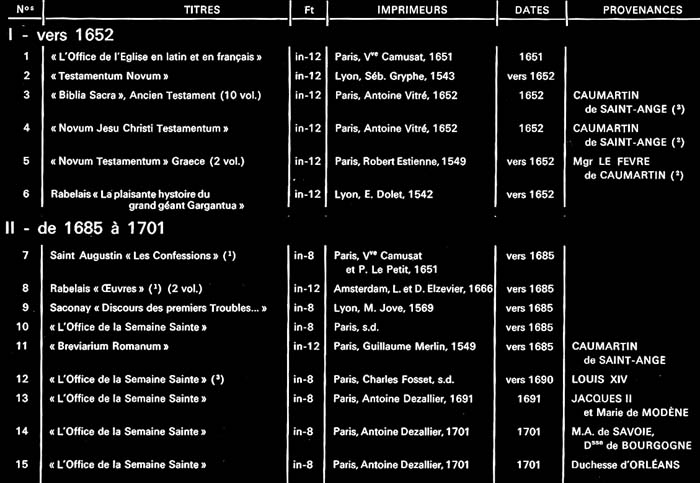
| It is perhaps then, no surprise to find yet another Office de la semaine sainte by Antoine Dezallier in a Atelier des Caumartin binding, however the publication date of 1715 is at bit of a shock. If this binding was executed in 1715, it would extend the second phase of Caumartin activity to then span 30 years, effectively doubling Esmerian's estimate. Otherwise it may be that this particular volume has been rebound in an earlier binding, which seems a most unusual and unlikely possibility. This binding resembles in many ways the British Library example Davis 469 which I have detailed previously (click to link to Atelier des Caumartin - Imprints) |
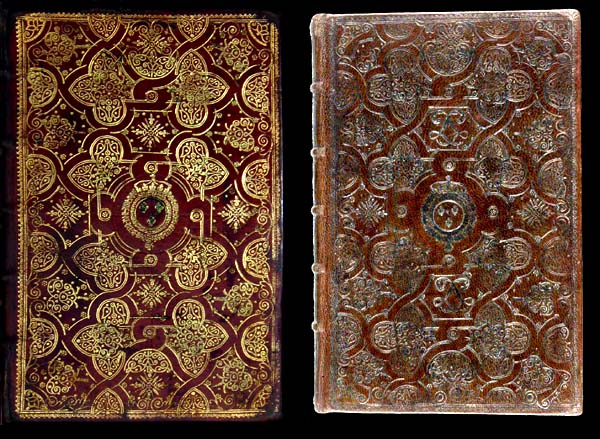
| In Comparative Diagram 1 we see that both bindings are of a similar size with identical imprints used in the same fashion and layout positions. Both bindings display the Royal Arms of the King of France, Louis XIV (or his family). Coincidentally, Louis XIV died in 1715. Below is another binding that shows remarkable similarities British Library specimen c67e7 which has also been detailed on the Atelier des Caumartin - Imprints page. |
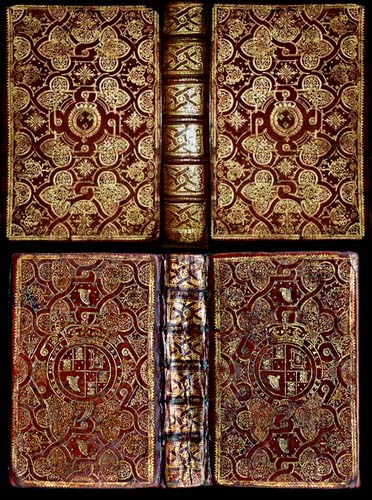
| We see in Comparative Diagram 2, that the spine of both specimens has been decorated without including a label and that the identical panel design has been imprinted with the same tools. |

| Below in Comparative diagram 4, I have extracted the Caumartin imprint ac-8-3 from the 1715 binding and compare it with the same imprint found on my 1647 Breviarium binding. These high resolution images show conclusively that both imprints derive from the same tool. And that the semicircular border is an integral part of the tool, this is a detail that escaped the attention of Esmerian who illustrates a number of tools of this type without the border. These tools which have been fashioned within semicircular or v shaped borders represent the last phase in evolution of pointille/fanfare decoration. |
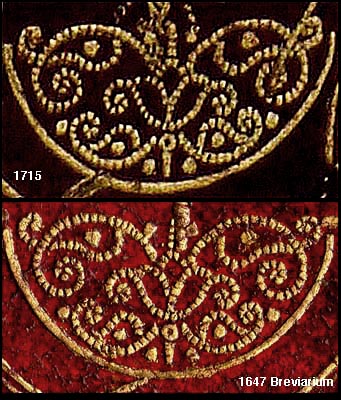
| Thus our comparative study of this binding quickly confirms that it certainly derives from the Atelier des Caumartin, its importance is magnified by the chronological implications of a possible execution in the year 1715. The close correspondence of other similar bindings which are for the most part without verified dating, suggests that these may derive from a similar period. Further research in the area of a connection between Louis XIV and Antoine Dezallier may finally reveal the identity of this binder or doreur who as yet remains known only as someone who worked for the Family Caumartin. |
| Virtual Bookings, created by L. A. Miller | return to the Home page of VIRTUAL BOOKBINDINGS |